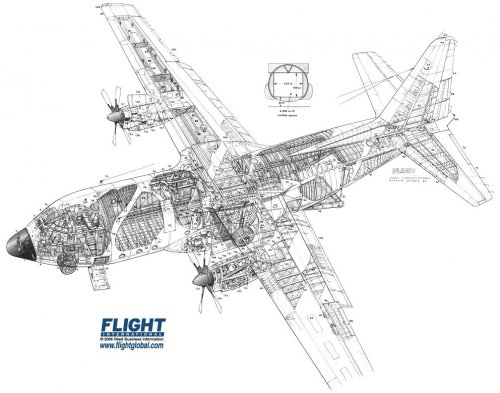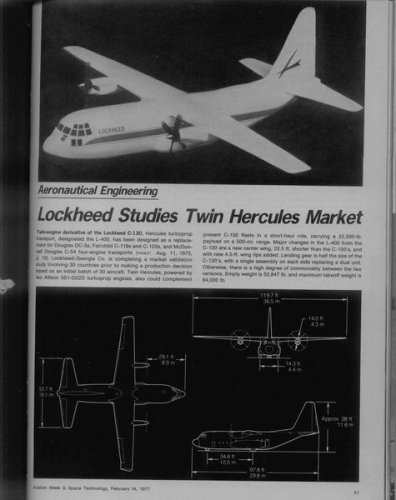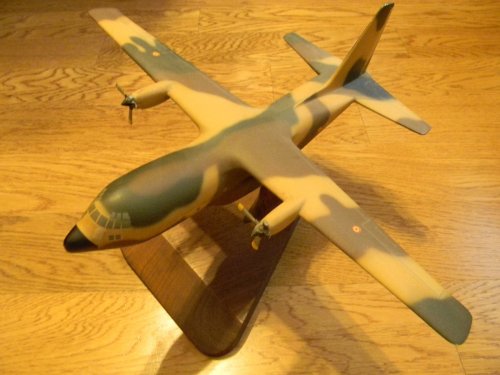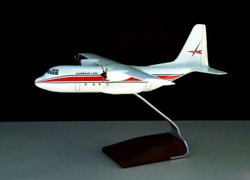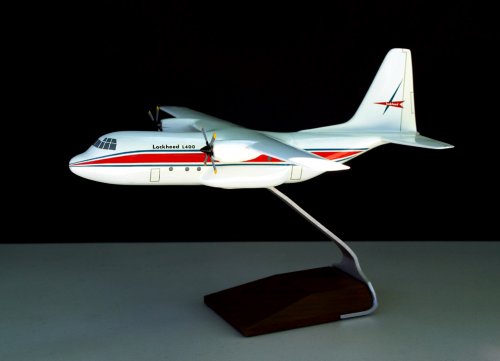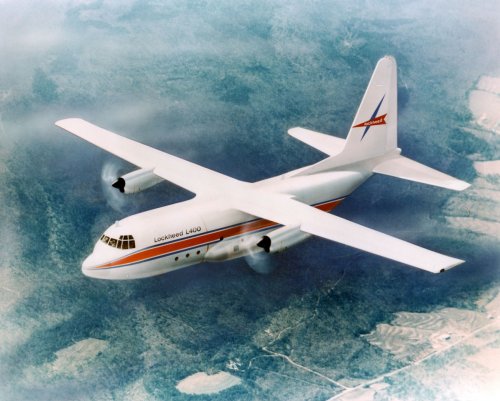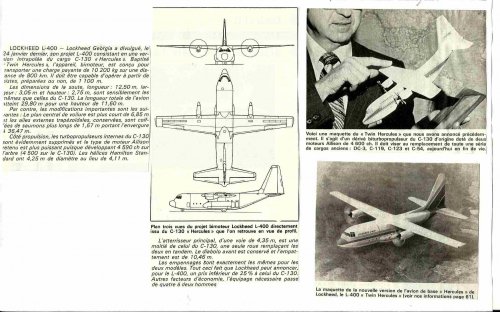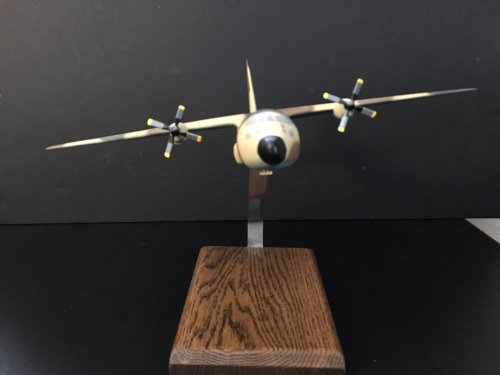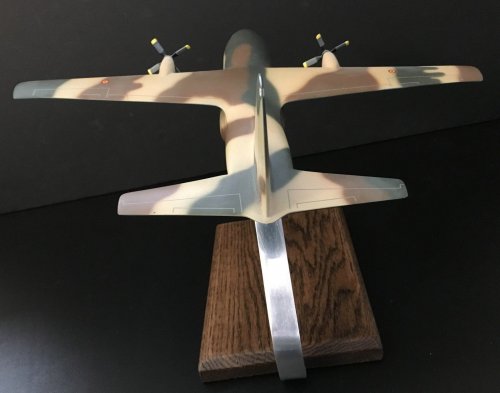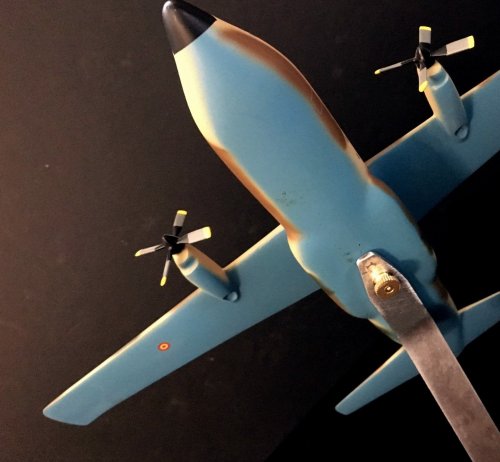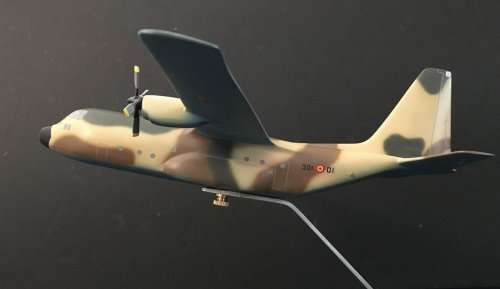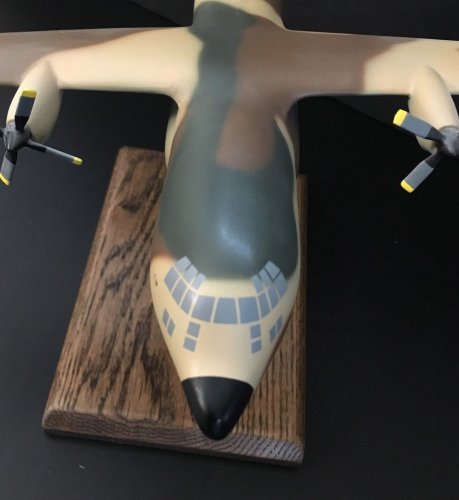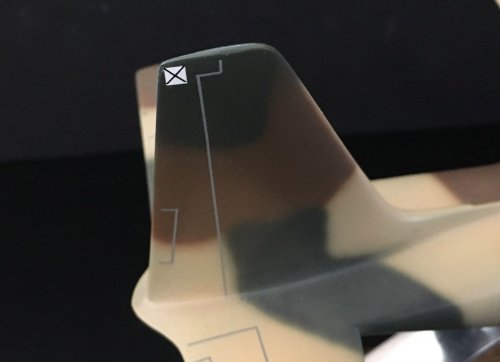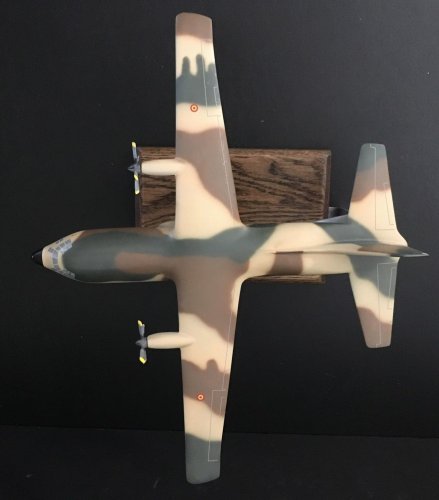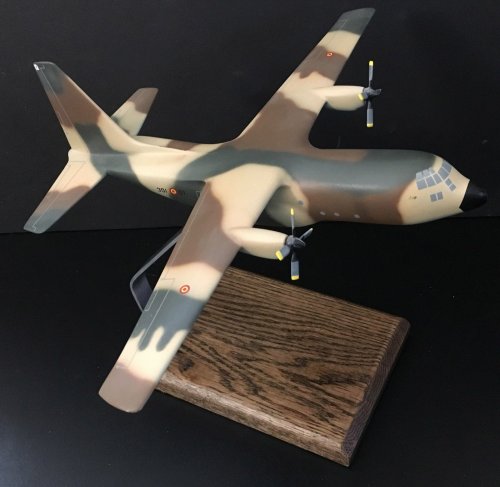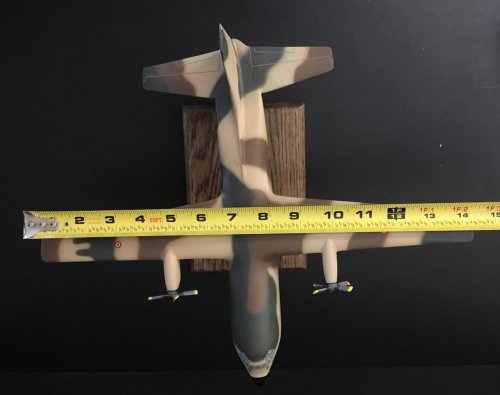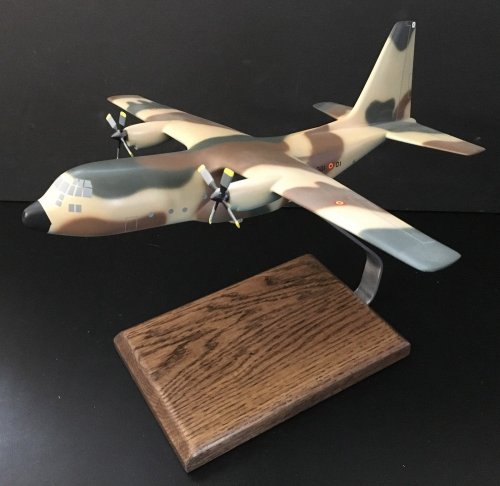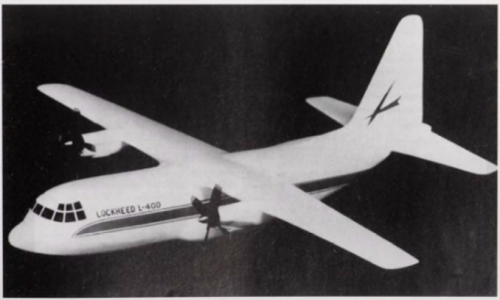- Joined
- 3 January 2006
- Messages
- 1,223
- Reaction score
- 943
The L-400 was apparently an active project at the same time the twin engine L-1011 "Bi-Star" variant was being marketed, roughtly in about 1978. An entry appears in the 1978-79 Jane's All the World's Aircraft for both projects.
It is not immediately obvious if the project was soliticed by the USAF, or any other potential customer, but there were many failed tactical airlifter proposals in this era, such as the CASA C-401. Program failures were typically blamed on economic and political factors, although it would appear that the market for sub-C-130 tactical airlifters was very limited.
It is not immediately obvious if the project was soliticed by the USAF, or any other potential customer, but there were many failed tactical airlifter proposals in this era, such as the CASA C-401. Program failures were typically blamed on economic and political factors, although it would appear that the market for sub-C-130 tactical airlifters was very limited.

